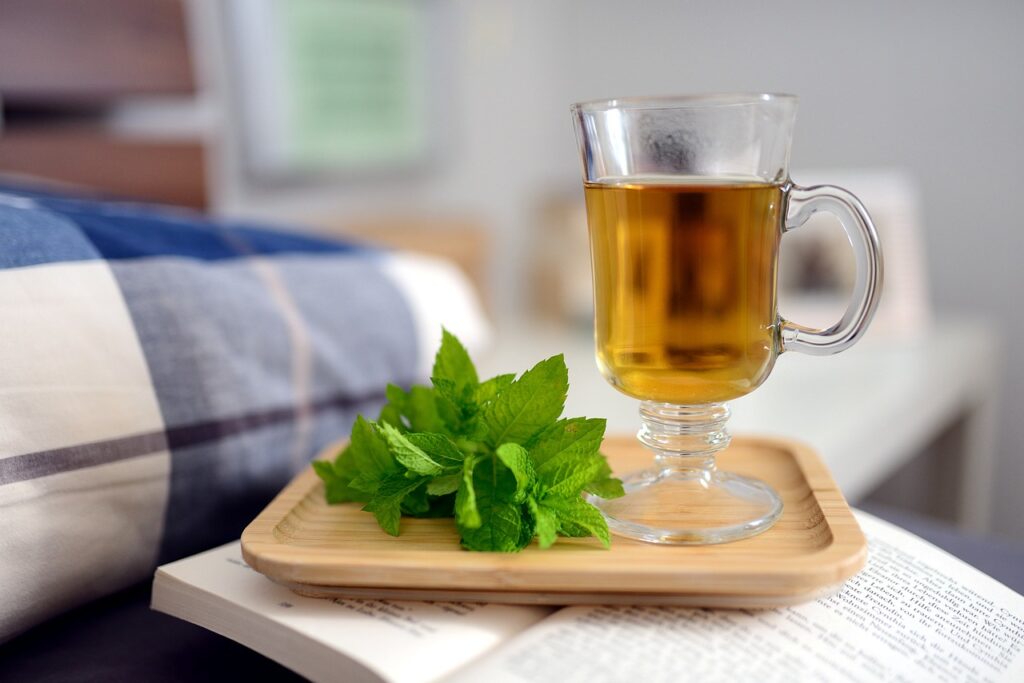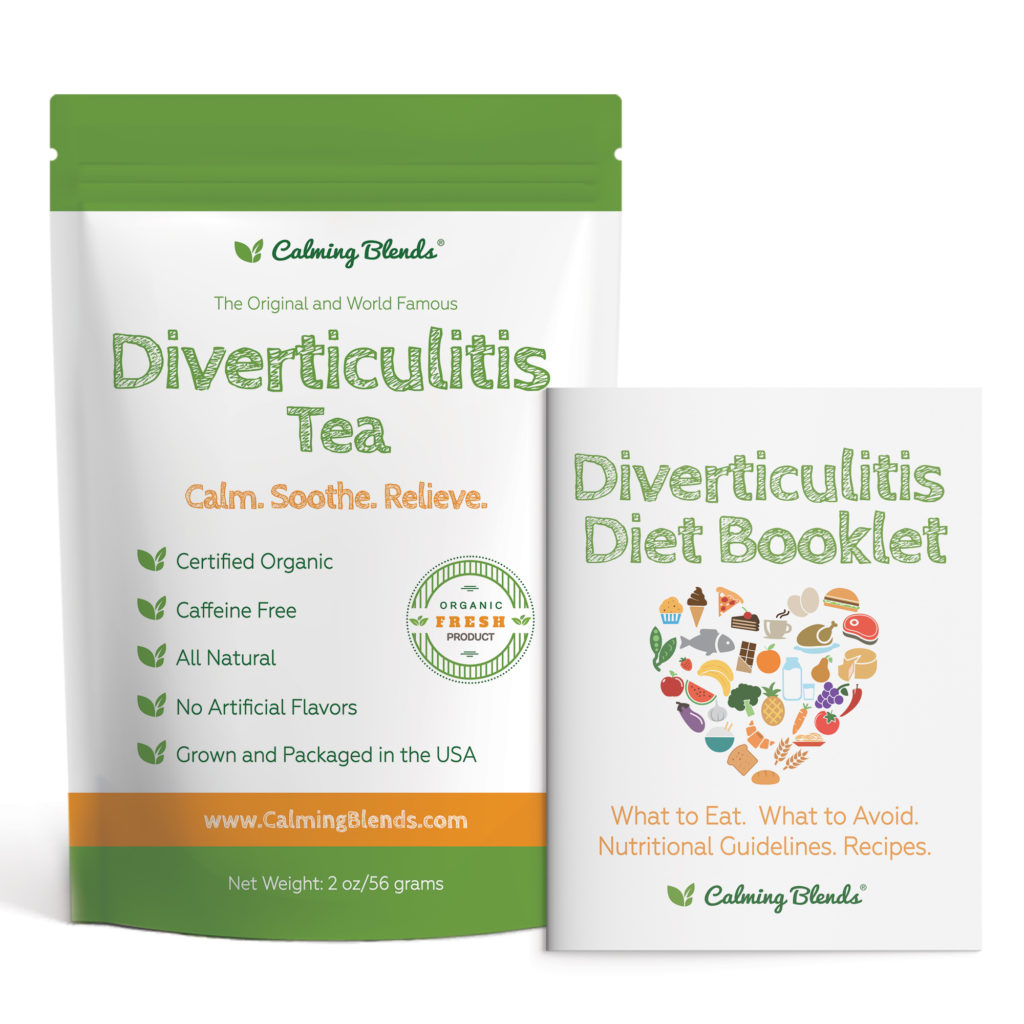Diverticulitis is a condition that affects the digestive tract, specifically the colon. It occurs when small pouches, called diverticula, form in the wall of the colon and become inflamed or infected. For those who have experienced a diverticulitis flare-up, the road to recovery can be challenging but manageable with the right diet.
At Calming Blends, we understand how vital it is to support digestive health through proper nutrition, which is why we’ve crafted our Diverticulitis Tea. In this blog, we’ll explore the diverticulitis recovery diet, how to transition back to a regular diet, and offer tips to ease inflammation and promote long-term gut health.
Understanding Diverticulitis Recovery
During an active diverticulitis flare-up, inflammation can cause pain, bloating, and bowel issues. While treatment often includes antibiotics or, in severe cases, surgery, diet plays a crucial role in both managing symptoms and preventing future flare-ups.
The diverticulitis recovery diet typically progresses in phases, from a clear liquid diet to a low-fiber diet, and finally, back to a high-fiber maintenance diet. Let’s break down each stage:
1. Clear Liquid Diet (During the Acute Phase)
During the acute phase of diverticulitis, inflammation and infection can cause intense discomfort. To give the colon time to heal, your doctor may recommend a clear liquid diet. This diet provides hydration and necessary nutrients while minimizing strain on the digestive system.
Foods to include:
- Clear broths (chicken, vegetable, or bone broth)
- Clear juices (without pulp)
- Herbal teas (like our Diverticulitis Tea, which is specially formulated to soothe the gut)
- Water, electrolyte drinks, or gelatin
Tips for success:
- Drink slowly and frequently to stay hydrated.
- Avoid solid foods, caffeine, and alcohol as they may irritate the digestive system.
- Gradually increase your intake of fluids as you feel better.
This phase typically lasts 2–3 days, or until symptoms begin to subside. Once the pain has lessened, your doctor may recommend moving on to the next phase of the recovery diet.
2. Low-Fiber Diet (After the Acute Phase)
As you transition out of the acute phase, your digestive system will still need time to recover. A low-fiber diet helps reduce strain on the colon while providing essential nutrients for healing.
Foods to include:
- White bread, pasta, and rice
- Canned or cooked vegetables (without skins or seeds)
- Lean proteins like poultry, fish, and eggs
- Low-fiber fruits such as applesauce or ripe bananas
- Smooth nut butter (peanut butter or almond butter)
Foods to avoid:
- Raw fruits and vegetables (especially those with seeds)
- Whole grains, seeds, nuts, and legumes
- Spicy or fried foods that may irritate the digestive tract
- For more information, refer to our comprehensive list of foods to avoid for Diverticulitis.
During this phase, focus on soft, easily digestible foods that won’t aggravate your symptoms. Most individuals can resume a low-fiber diet for about 1–2 weeks until symptoms improve, allowing them to transition to a more balanced, high-fiber diet.
3. High-Fiber Diet (Long-Term Maintenance)
Once your symptoms have completely subsided, a high-fiber diet is key to preventing future diverticulitis flare-ups. Fiber softens stool, helping it pass more easily through the colon and reducing the risk of diverticula becoming inflamed or infected.
Foods to include:
- Whole grains like oats, brown rice, and quinoa
- Fresh fruits and vegetables (particularly those rich in soluble fiber)
- Beans, legumes, and lentils
- Nuts and seeds (if tolerated)
- Fiber-rich snacks like flaxseed or chia pudding (if tolerated)
How much fiber is enough?
The American Dietetic Association recommends 25 grams of fiber per day for women and 38 grams for men. It’s essential to increase fiber gradually, as a sudden increase can cause bloating or discomfort.
Incorporating fiber-rich foods like avocados, carrots, and leafy greens can make a significant difference in preventing diverticulitis flare-ups.
The Role of Hydration
Hydration is a vital component of the diverticulitis recovery diet. Drinking plenty of water helps prevent constipation, which is a known contributor to diverticulitis flare-ups. Our Calming Blends Diverticulitis Tea can be an excellent choice for soothing inflammation and staying hydrated. Packed with calming herbs, this tea can ease bloating and discomfort, making it an essential part of your recovery routine.
Tips for Long-Term Digestive Health
While the diverticulitis recovery diet focuses on short-term healing, long-term digestive health requires a well-rounded approach. Here are some tips to help maintain a healthy gut:
- Exercise Regularly: Physical activity improves digestion and keeps bowel movements regular.
- Avoid Processed Foods: A diet high in processed foods can trigger inflammation, so prioritize whole, natural foods.
- Chew Food Thoroughly: Chewing food slowly and thoroughly aids digestion, making it easier for your body to absorb nutrients.
- Practice Stress Management: Stress can have a negative impact on gut health. Mindfulness practices like yoga or meditation can reduce stress and improve digestion.
- Monitor Fiber Intake: Ensure you’re getting enough fiber each day, but introduce it gradually if you’ve recently recovered from a flare-up.
Frequently Asked Questions (FAQ)
Q: How long should I follow the clear liquid diet?
A: The clear liquid diet is typically followed for 2–3 days, or until your symptoms begin to improve. Always consult your doctor before making any changes to your diet during an active diverticulitis flare-up.
Q: Can I drink coffee during recovery?
A: It’s best to avoid coffee during the early stages of recovery, as caffeine can irritate the digestive system. Opt for herbal teas like our Calming Blends Diverticulitis Tea instead.
Q: When can I reintroduce high-fiber foods into my diet?
A: You can reintroduce high-fiber foods once your symptoms have completely subsided, and your doctor has given you the go-ahead. It’s important to increase fiber intake gradually to avoid bloating or discomfort.
Q: What are the best sources of fiber for preventing diverticulitis?
A: Some excellent sources of fiber include whole grains, fruits, vegetables, beans, and legumes. Aim for a mix of soluble and insoluble fiber to support digestion.
Q: Will I always need to follow a low-fiber diet?
A: No, the low-fiber diet is temporary and is usually only followed after a flare-up. Once you’ve recovered, you can switch to a high-fiber diet to prevent future flare-ups.
Q: Can the Diverticulitis Tea help during recovery?
A: The Calming Blends Diverticulitis Tea is designed to calm irritation, ease bloating, and promote healthy digestion. It can be a beneficial addition to your recovery plan, particularly during the clear liquid phase.
Conclusion
Recovering from diverticulitis requires patience, but by following the proper dietary phases, you can promote healing and reduce the risk of future flare-ups. From clear liquids to low-fiber foods and finally transitioning to a high-fiber diet, each step plays a crucial role in your recovery.
At Calming Blends, we’re dedicated to supporting your digestive health with our specially crafted Diverticulitis Tea. Stay hydrated, maintain a balanced diet, and focus on long-term gut health to enjoy a happier, healthier life.
References:
- American Dietetic Association, Fiber Guidelines
https://www.eatright.org/food/nutrition/dietary-guidelines-and-myplate/fiber-the-carb-you-need - National Institutes of Health (NIH), Diverticulitis Information
https://www.niddk.nih.gov/health-information/digestive-diseases/diverticular-disease - Mayo Clinic, Diverticulitis: Diet and Treatment Options
https://www.mayoclinic.org/diseases-conditions/diverticulitis/symptoms-causes/syc-20371758


